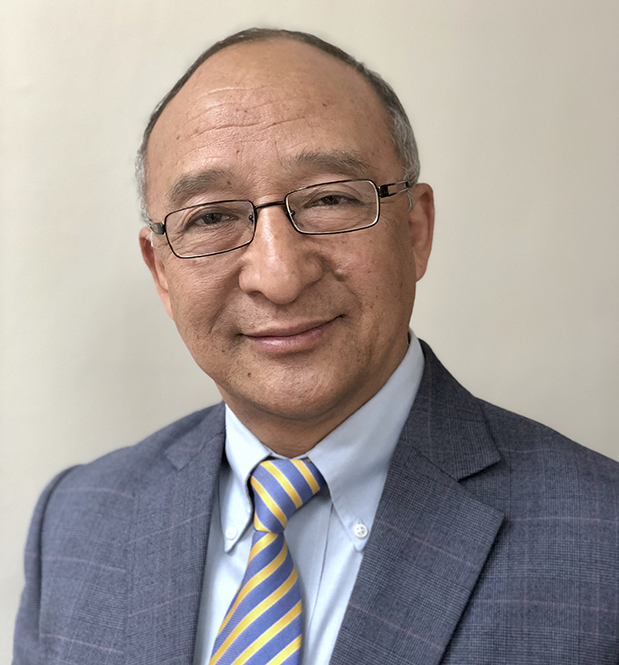It’s not an understatement to say that today’s cataract patients have high expectations. They expect perfection, even the astigmatic ones. Patients expect to maintain their active lifestyles and achieve flawless visual acuity from the end of their nose to the flag on the ninth golf tee, and every distance in between.
We know that visual outcomes, associated satisfaction and quality of life are impacted by preoperative astigmatism and postoperative residual astigmatism. Most surgeons will say that surprising refractive outcomes are the result of all the preoperative and intraoperative variables that need to be carefully weighed and balanced.
Managing astigmatism with precision during cataract surgery traditionally requires accurate markings to identify a reference position, such as the horizontal axis and the axis of astigmatism. Two major challenges exist: First, an estimated five-degree alignment error of a toric intraocular lens (IOL) against the expected angle can result in a 17% error in anticipated effect.1 Second, the assumed horizontal axis, ink-marked while the patient is in an upright, seated position, may experience variable degrees of cyclorotation once the patient is supine during surgery.
Are we growing tired and frustrated with calculating and recalculating, measuring and remeasuring, and then juggling all the variables? If so, there’s good news: In recent years, image-guided technologies have delivered new and improved ways of looking at cataract surgery, which help to minimize potential sources of error during each step of preoperative and intraoperative process.
Dr. Jeewan Singh Titiyal, professor and head of Cornea, Cataract & Refractive Surgery Services and chairman of the National Eye Bank at Dr. Rajendra Prasad Centre for Ophthalmic Sciences, in New Delhi, India, shared his impression of the technology. “Cataract surgery is becoming akin to a refractive procedure with increasing patient expectations. Image-guided technologies have heralded a new era of phacoemulsification wherein cutting-edge technology is integrated with routine cataract surgery to provide a better quality of vision, in addition to precise visual acuity.” He added that novel technological platforms assume even more importance when implanting premium intraocular lenses, such as toric and multifocal IOLs.
At present, various platforms are available to optimize results of cataract surgery, including VERION (Alcon, Fort Worth, Texas, USA), CALLISTO (Carl Zeiss Meditec, Jena, Germany), and Optiwave Refractive Analysis (ORA, WaveTec Vision Systems Inc., California, USA).
Dr. Titiyal and colleagues recently published their study comparing toric IOL alignment assisted by image-guided surgery or manual marking methods and its impact on visual quality.2 In this prospective comparative study, they enrolled 80 eyes with cataract and astigmatism ≥1.5 D to undergo phacoemulsification with toric IOL alignment by manual marking method (bubble marker) or CALLISTO eye and Z align. They found significantly less deviation from the target axis of implantation and significantly better visual quality in the image-guided group.
As Dr. Titiyal explained: “CALLISTO and VERION provide step-by-step guidance throughout phacoemulsification, right from the placement of incisions, sizing and centration of capsulorhexis, to the centration of multifocal IOLs and alignment of toric IOLs along the requisite axis. We have observed more precise toric IOL alignment with CALLISTO-guided surgery as compared with conventional manual marking, and the visual quality is definitely superior with CALLISTO.”
He further commented: “VERION can be integrated with the LenSx femtosecond laser platform (Alcon) along with ORA, which aids in preoperative planning, provides intraoperative guidance, and enables postoperative assessment and refinement of outcomes. Optiwave Refractive Analysis (ORA) provides a real-time guide to IOL power selection and alignment of toric IOLs.”
Dr. Titiyal feels that image-guided surgery allows precise alignment of toric IOL without a need for reference marking. It is associated with superior visual quality which correlates with the precision of IOL alignment. “We have found it to be extremely valuable in post-refractive surgery cases where it is often difficult to calculate an accurate IOL power preoperatively,” he noted.
Dr. Stephen Slade of Slade & Baker Vision Center in Houston, Texas, USA, has published a multicenter study with colleagues in Minnesota and South Carolina to assess the clinical utility of the image-guided surgical planning system for eyes with pre-existing astigmatism using toric IOL or corneal incisions. They found that using the image-guided surgical planning system with the LenSx procedure resulted in a three-month postoperative accuracy of less than 0.50 D residual refractive cylinder in 82% of eyes, compared to 69.6% of eyes not using the procedure.3
Meanwhile, Dr. Bryan Hung Yuan Lin, superintendent of Zhong-Li Universal Eye Center, chief director of Universal Eye Center Alliance Cataract Committee, professor at the Fu-Jian Medical University and Shanghai Raiding Hospital, and director of the Ophthalmological Society of Taiwan Cataract Committee, has tremendous experience with image-guided technology. And in 2017, he published a study of the technology in Clinical Ophthalmology.4
Dr. Lin and colleagues compared the VERION with commonly used keratometers containing monochromatic light-emitting diodes (LEDs) (LenStar LS900, Haag-Streit, Switzerland and AL-Scan Optical Biometer; Nidek, Japan), topographers based on the use of Placido rings (OPD-Scan III; Nidek, Japan), and a rotary prism system (auto kerato-refractometer KR-8800; Topcon, Japan).
In this retrospective study of the right eyes of 115 patients, they found that none of the VERION parameters were significantly different from those of AL-Scan and Lenstar. “AL-Scan
(2.4mm zone) was especially similar to VERION,” shared Dr. Lin. “Wide limits of agreement (confidence intervals) are potential contributors to axis error in patients with toric IOL implants. This study demonstrated moderate to high correlations for all parameters measured using VERION compared to those measured using other devices. No differences were observed between the VERION Reference Unit, AL-Scan and Lenstar devices, which are all automated keratometers that rely on the projection of light onto the corneal surface in order to obtain K-values measurements.”
Postoperative visual outcomes are strongly associated with the accuracy of preoperative keratometry measurements. Overcorrection of astigmatism with large degrees of axis misalignment is known to cause the most patient dissatisfaction. Dr. Lin and colleagues reported: “Corneal data measurements with each device based on different techniques and calculations are thought to result in different K-values measurements. However, no differences in corneal astigmatism axis values were observed.”
Dr. Lin shared some key advice: “Understand the utility and performance of available devices. As more severe peripheral corneal shape deformations or irregular astigmatism may affect measurement results, further corneal topography and pachymetry measurements may be required to obtain reference values in such cases.” He added that surgeons can select the most appropriate combination of devices for the evaluation of individual patients and clinical applications.
What are other studies saying? Dr. Eirini-Kanella Panagiotopoulou and colleagues from University Hospital of Alexandroupolis in Dragana, Greece, reviewed 21 studies of current image-guided systems used for cataract surgery or refractive lens exchange.5 They concluded that image-guided systems appear to be accurate and reliable with high degrees of repeatability and reproducibility regarding the keratometry and IOL power calculation. Although superior over the conventional manual ink-marking techniques for toric IOL alignment, they cautioned that these systems were not yet interchangeable with the current established and validated keratometric devices.
References
1 Visser N, Berendschot TT, Bauer NJ, Jurich J, Kersting O, Nuijts RM. Accuracy of toric intraocular lens implantation in cataract and refractive surgery. J Cataract Refract Surg. 2011;37:1394-1402.
2 Titiyal JS, Kaur M, Jose CP, Falera R, Kinkar A, Bageshwar LM. Comparative evaluation of toric intraocular lens alignment and visual quality with image-guided surgery and conventional three-step manual marking. Clin Ophthalmol. 2018;24(12):747-753.
3 Slade S, Lane S, Solomon K. Clinical Outcomes Using a Novel Image-Guided Planning System in Patients With Cataract and IOL Implantation. J Refract Surg. 2018:1;34(12):824-831.
4 Lin HY, Chen HY, Fam HB, Chuang YJ, Yeoh R, Lin PJ. Comparison of corneal power obtained from VERION image-guided surgery system and four other devices. Clin Ophthalmol. 2017;11:1291-1299.5 Panagiotopoulou EK, Ntonti P, Gkika M, Konstantinidis A, Perente I, Dardabounis D, Ioannakis K, Labiris G. Image-guided lens extraction surgery: a systematic review. Int J Ophthalmol. 2019;12(1):135-151.





